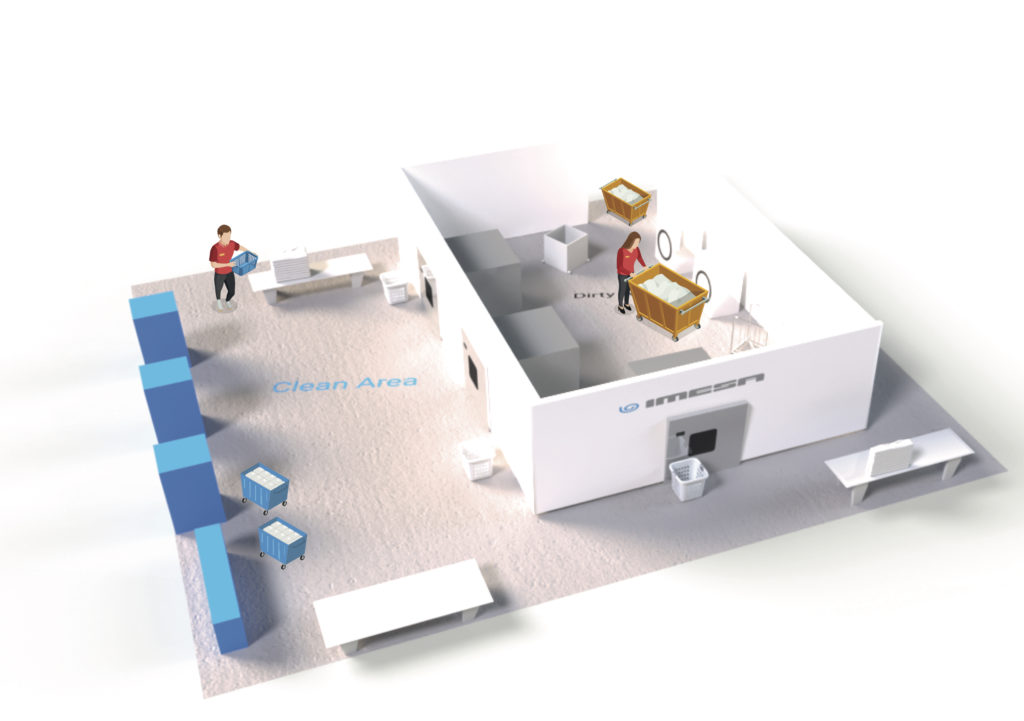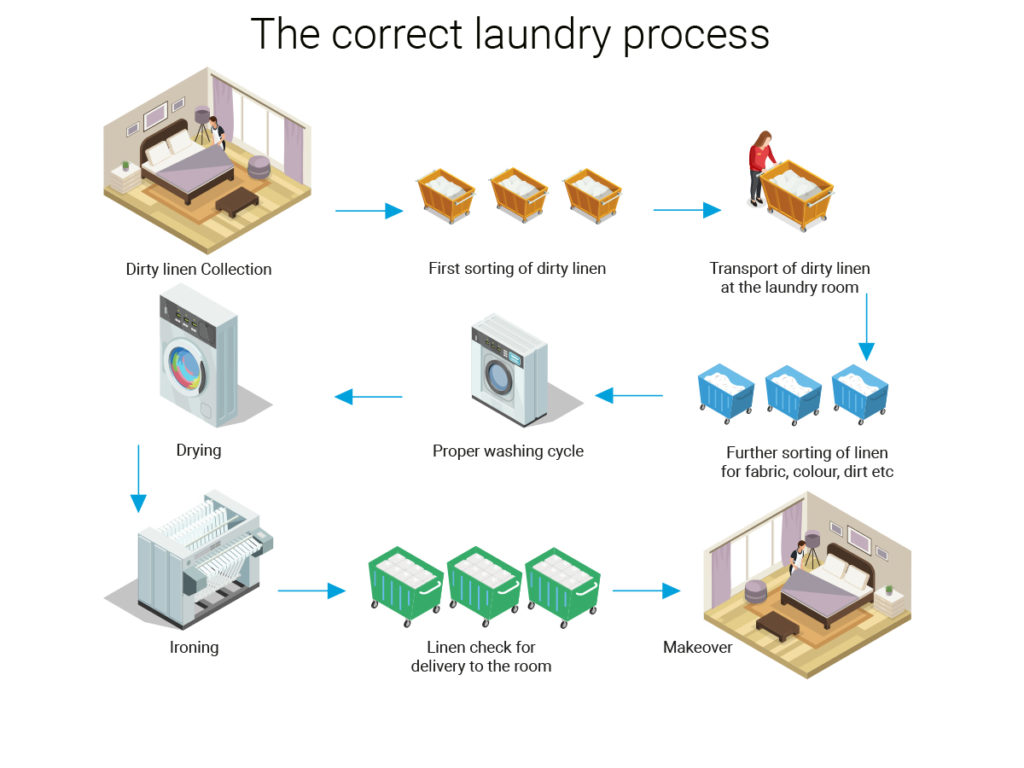Organizing a laundry means also optimizing the management of the spaces to ensure a correct and safe operation.
It’s important to consider that everything in a laundry room is potentially contaminated with microbial agents.
The incoming textiles are the first source of contamination because, in addition to macroscopic dirt such as stains and organic residues, they contain microscopic dirt in the form of potentially pathogenic germs.
Other secondary sources of dirt, such as trolleys, transport crates and all incorrectly cleaned work surfaces, should not be underestimated.
To reduce subsequent contamination of clean textiles, it is therefore necessary to properly sanitize contaminated textiles and all secondary sources by managing them appropriately.
How to manage the textile cleaning / washing process?
Dirty fabrics must be stored in special bags marked and divided by type of linen and handled with care to avoid the generation of aerosols, with consequent potential contamination of operators and surfaces.
In order to obtain microbiological results, the UNI EN 14065 technical standard – “Textiles treated in the laundry – Biocontamination control system” was developed within the European Standardization Committee.
This standard can be compared to the Analysis of Critical Control Points (HACCP), applied in the food industry and industrial laundries.
This standard is based on the evaluation of the risk analysis and biocontamination control system (RABC) and aims to guarantee the microbiological quality of the textiles treated in the laundry.
The RABC system refers to the entire process, from the collection of dirty items to the delivery of products ready for use.
Although there are no legal obligations in the laundry sector, more and more structures organize their laundry in two distinct spaces: DIRTY AREA and CLEAN AREA, ensuring maximum safety and zero risk of contamination between dirty and clean items, thus placing loading and unloading linen in two separate rooms.
DIRTY AREA: where dirty textile products are received.
Operators who receive and handle dirty clothes, should always wear suitable Personal Protective Equipment (PPE), such as gloves, clothing and respiratory protective devices, in order to protect themselves from the risks arising from any contamination.
Sorting dirty laundry before washing is an important operation.
Also in this phase, during which dirty laundry is divided according to the type of washing it will have to undergo, operators should wear appropriate PPE, as sorting is done manually.
CLEAN AREA: where the garments are dried, ironed and divided for delivery
This area, suitably separated from the previous one, should not contain infected instruments and equipment to avoid the transmission of bacteria and viruses on already treated garments.

How to organize the laundry route in the HOTEL?
A laundry is no longer required only to wash clothes correctly, but it is essential to apply all the control and safety systems already in force in the hospital sector: transport, reception, sorting, handling and delivery are crucial phases of the laundry process.
– Collect the dirty laundry in closed containers (bags or big bags in trolleys) by handling and shaking it as little as possible in the environment before being inserted in the container itself and moving to the laundry area for washing and sanitizing.
– Replace the bed linen and towels used with sanitized linen according to an adequate frequency of changing the textiles.
It is essential that hotel structures and accommodation facilities in general take care to safeguard the hygienic qualities of sanitized textiles, even during the storage phases in warehouses or floor trolleys of the clean product, up to the use in the rooms.
Probably choosing to dedicate a person and a set of equipment to the collection of dirty laundry from the room and a person and a set of equipment to return and renovate the rooms is the correct solution.
For further information, contact us at the following address: marketing@imesa.it







